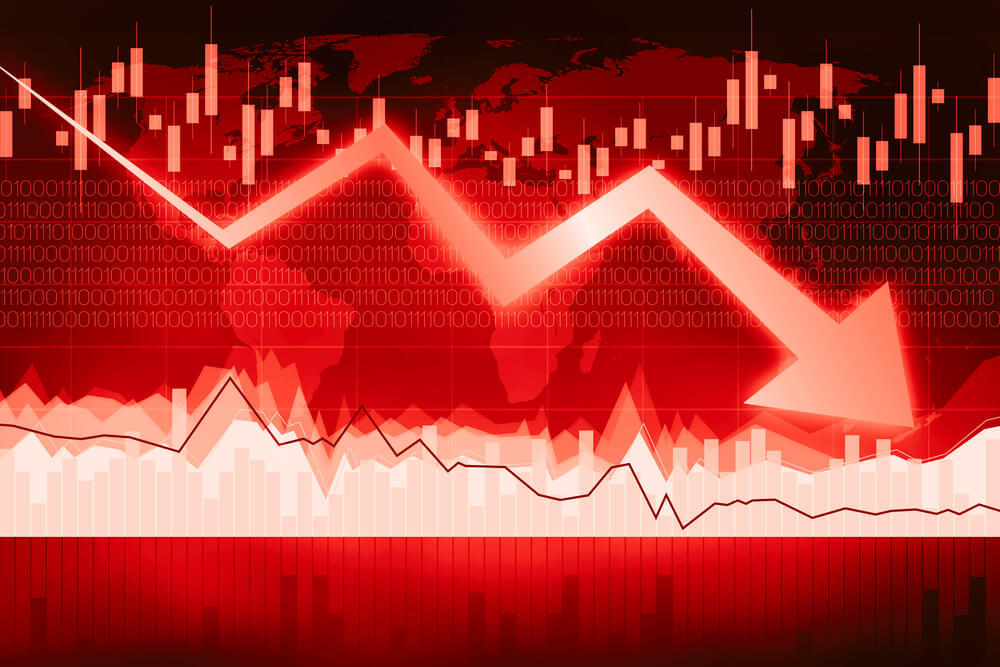“It doesn’t matter whether it comes in one year or four. If you don’t start preparing now, you will maybe do better while the economy continues to do OK, but whatever gain you get from that will be overwhelmed by problems with your investments in the downturn.”
– “Bond King” Jeffrey Gundlach
YOUGHAL, IRELAND — “Big news this month,” begins a note from our research director, Joe Withrow. “Our Doom Index ticked up to 9.”
The last time this happened, all Hell broke loose a few months later …
Major banks went broke, and Wall Street needed to be bailed out by the Federal Reserve. General Motors and Chrysler, too, would have gone under without federal help. And in September of 2008, Fed chief Ben Bernanke told Congress that “we may not even have an economy on Monday” if it failed to pass its TARP (Troubled Asset Relief Program) bill soon.
When the dust finally settled in March of 2009, stock market investors had lost half their money … and 7 million people had lost their homes.
In gold terms, the losses were even more severe … and part of a more revealing picture.
Stock investors were on top of the world in the spring of 1999 — which was probably the all-time peak for the U.S. too. Thereafter, it was downhill in almost every way.
From the high, when it took over 40 ounces of gold to buy the Dow, stocks fell all the way until October of 2011, to under 7 ounces — a loss of 82%.
But let’s see what’s happening now … Then, we’ll come back to Joe’s warning.
Fake Boom
The Dow Jones Industrial Average moved up 182 points to a new record Thursday. Behind it was the idea that the trade war is close to an end.
But trade moves on trains, trucks, planes and ships.
Dow Theory — as explained to us by the late Richard Russell — wisely requires a high in the Dow industrials to be confirmed by a high in the Dow transports.
If the transports don’t go up, it’s probably because the goods aren’t really moving. And if the goods aren’t really moving, there’s no real boom happening. No new high in transports, no new bull market.
The Transportation Index hit a high about a year ago. It has since stubbornly refused to corroborate the industrials’ bull-market story.
Most likely, the run-up in stock prices this year is just a financial move — a product of Fed rate cuts, hype, buybacks and momo algorithms — not a genuine boom in the real economy.
Trade War Hype
In the hype category is the latest news from the trade war.
Donald Trump could never afford to go full crazy in the trade war. It would have been disastrous to him personally as well as the nation. And now, with an election coming up in 12 months, he has to back away from it.
The Chinese lead dog faces no election; he can take his time. But The Donald needs a deal and is prepared to accept almost anything that isn’t too embarrassing.
Most likely, the “deal” will take us back to where we were when the trade war began. Mr. Trump will claim victory. His fans will cheer. And — except for the losses that can never be recovered … and the foreign producers who have come to see that they can’t rely on their U.S. customers — things will go back to normal.
The trouble with normal, though, is that it doesn’t stand still. Normal is restless, footloose and homeless.
The normal growth rate during the last 11 quarters of the Obama team’s reign was 2.5%. And while The Donald may claim to have performed miracles, the growth rate during his 11 quarters so far has averaged 2.5%, too.
Recession Ahead
The Trump campaign slogan — “Make America Great Again” — has become “Keep America Great.” But between the first slogan and the second, nothing much changed.
Normal? Yes. But the normal thing is to expect change. And after such a long run of growth, the normal change to expect is non-growth (aka recession).
It was normal to expect it when Obama was in the White House. It is even more normal to expect it now. Because no expansion — and especially not one based on fraudulent money and fake interest rates — lasts forever.
The expansion that was born in 2009 is now geriatric, older than any in U.S. history. It still totters along, using a cane. But the longer it lives, the closer it comes to the grave.
Cracks Widen
And here is the report from our research department, with an update on our Doom Index. Joe:
Hey Bill,
Big news this month: Our Doom Index ticked up to 9. The last time we hit these levels was the first quarter of 2008 … and we know how that turned out.
Our analyst Houston Molnar has been working with me on this. Here are his highlights for this quarter:
Manufacturing reached its lowest level since the financial crisis. That’s based on data from the ISM manufacturing index. And the railcar utilization numbers confirm this. Railcar utilization contracted once again this quarter. It’s now down 20% since Q3 2018. The trains are slowing …
The slowdown in the real economy has made its way into the credit markets. In fact, credit growth has slowed 81% since the start of this year. For the quarter, we saw credit expand by only 1.8%.
In the bond market, we are seeing twice as many downgrades compared to upgrades; 771 bonds have been downgraded so far this year. That’s the most downgrades year to date since 2009. Of the 771 bonds downgraded this year, 522 of those were junk bonds. The junk is getting junkier.
The Fed is nervous. As you know, they are back to their old tricks. It’s “Inflate or Die.” Houston provided an updated chart of the Fed’s balance sheet for us. They’ve fired up the printing press again:
So, bottom line is the numbers are falling apart.
Stocks are hitting new nominal highs right now because the financial news is saying we’ve got a trade deal coming.
But the cracks are widening beneath the surface … and it appears the powers that shouldn’t be are starting to panic. We suspect your Dow-to-Gold ratio will serve as important investment guidance in the years to come …
Publicly, the Fed may be saying that the U.S. economy is “in a good place.” But our economists — including our own Joe Withrow and Houston Molnar — and theirs are all looking at the same vital signs.
And all of them must be thinking: Time to call the funeral home.
Regards,
Bill
• This article was originally published by Bonner & Partners. You can learn more about Bill and Bill Bonner’s Diary right here.




